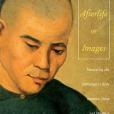《The Afterlife of Images》是Duke University Press出版的圖書,作者是Larissa N. Heinrich
基本介紹
- 中文名:The Afterlife of Images
- 作者:Larissa N. Heinrich
- 出版社:Duke University Press
- 出版時間:2008年2月20日
- 頁數:222 頁
- 定價:22.95 美元
- 裝幀:Paperback
- ISBN:9780822341130

《The Afterlife of Images》是Duke University Press出版的圖書,作者是Larissa N. Heinrich
《The Afterlife of Charlotte Browning》是2007年出版的圖書,作者是B., CHRISTINE。內容簡介 The Afterlife of Charlotte Browning offers answers to these queries. Charlotte narrates her experiences as she journeys Home, the place...
《The Death and Afterlife of Achilles》是2009年Johns Hopkins University Press出版的圖書,作者是Jonathan S. Burgess。內容簡介 Achilles' death-by an arrow shot through the vulnerable heel of the otherwise invincible mythic hero...
主要著作包括:The Afterlife of Images: Translating the Pathological Body between China and the We st(Duke,2008 ;三聯書店,2020)和Chinese Surplus: Biopolitical Aesthetics and the Medically Commodified Body(Duke,2018),在...
An American Architect in Republican Shanghai 試讀梁思成與中國營造學社在1930-1940年代所拍攝的調研照片 書評 Larissa N.Heinrich, The Afterlife of Images: Translating the Pathological Body between China and the West ...
Lina Selander Lina Selander是一位藝術家。參加展覽 主要作品 The Offspring Resembles the Parent(系列:無系列作品), 2015
